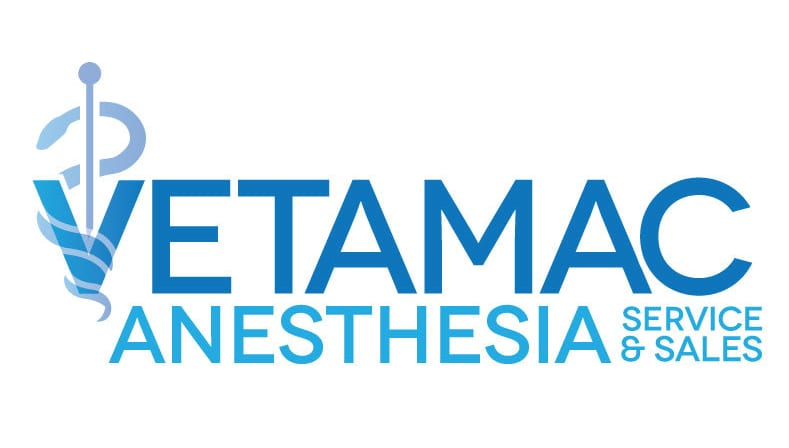Knowledge Center
Animal Health Anesthesia Machines & Service
 Routine Maintenance
Routine Maintenance
Checklist
Use this maintenance checklist to keep your anesthetic machines clean and working at peak performance.
 Isoflurane & Sevoflurane
Isoflurane & Sevoflurane
Consumption Chart
Use this chart to estimate consumption of liquid isoflurane and sevoflurane per hour.
 Characteristics of
Characteristics of
Common Vaporizers
 Bag & Circuit
Bag & Circuit
Size Chart
Use this chart as a guideline to determine the appropriate size rebreathing bag for veterinary patients.

Flowmeter Care
Minimize leaks and extra wear on the flowmeter.

Help! I May Have an Oxygen Leak!
Follow these steps to help diagnose a possible oxygen leak.

Isoflurane Safety Sheets

Sevoflurane Safety Sheets
Anesthesia Monitoring Guidelines

SafeSigh Non-Rebreathing System
Follow these instructions for using and performing a leak test on the SafeSigh Circuit.
- Four Questions Every Veterinary Hospital Should Ask Their Anesthesia Machine Service Provider
- Fall 2022
- The Why, the When and the How of Pressure Testing your Anesthesia Machine
- Summer 2022
- We all Pressure Test our Circle System, but What about our Non-Rebreathing System?
- Winter 2021
- Pet Loss and Suicide Prevention for Veterinary Professionals
- Fall 2021
- Waste Anesthetic Gases, Nothing To Just WAG a Tail At
- Summer 2021
- Under Pressure
- Spring 2021
- Dream BIG
- Winter 2020
- Is your Anesthesia Machine Safe?
- Fall 2020
- Anesthesia Machine Maintenance After a Procedure
- Summer 2020
- Troubleshooting the Anesthesia Machine During a Procedure
- Spring 2020
- Pre-Anesthetic Preparation/Anesthesia Machine Preparation
- Winter 2019
- Leaky Anesthesia Machine? How to Check the Breathing System
- DVM 360 December 16, 2019
- Anesthesia Equipment
- Fall 2019
- Anesthesia Monitoring Implements
- Summer 2019
- Activated Charcoal Canisters: You Asked, We Listened
- Spring 2019
- Who is Team Vetamac?
- Volume XIV Issue 4 Winter 2018
- Capnography
- Volume XIV Issue 3 Fall 2018
- Help, My Hospital's Oxygen Lines are Leaking!
- Volume XIV Issue 2 Summer 2018
- Non-Rebreathing Systems for Small Animal Anesthesia
- Volume XIV Issue 1 Spring 2018
- Using A Mechanical Ventilator: How, When & What?
- Volume XIII Issue 4 Winter 2017
- A Guide to Short Term Mechanical Ventilation
- Volume XIII Issue 3 Fall 2017
- Ventilation in the Peri Anesthetic Period
- Volume XIII Issue 2 Summer 2017
- Comparing & Understanding the Use of Low Flow Carbon Dioxide Absorbents
- Volume XIII Issue 1 Spring 2017
- New Products and Solutions to Remove Waste Anesthetic Gases
- Volume XII Issue 4 Winter 2016
- Pressure Testing the Anesthesia Machine
- Volume XII Issue 3 Fall 2016
- Can't Keep My Patients Asleep...Must Be The Machine or Is It?
- Volume XII Issue 2 Summer 2016
- WAG Update: Clearing The Fog
- Volume XII Issue 1 Spring 2016
- Which is More Difficult to Understand: Greek Mythology or Anesthetic Machine Physiology? Part II
- Volume XI Issue 4 Winter 2015
- Which is More Difficult to Understand: Greek Mythology or Anesthetic Machine Physiology?
- Volume XI Issue 3 Fall 2015
- Oxygen Generators in Veterinary Practice
- Volume XI Issue 2 Summer 2015
- Know What You Give, Know What You GetVaporizer Service vs. Vaporizer Exchange
- Volume XI Issue 1 Spring 2015
- Failing to Plan is Planning to Fail Part 2Planning for active waste anesthetic gas systems
- Volume X Issue 4 Winter 2014
- Failing to Plan is Planning to FailPlanning for medical gas systems
- Volume X Issue 3 Fall 2014
- Vapors on VaporFunction of Vaporizers
- Volume X Issue 2 Summer 2014
- How to Prevent Sheer PanicThe need for a protocol for safe anesthetists
- Volume X Issue 1 Spring 2014
- How Many O's Are Enough?Oxygen flow
- Volume IX Issue 4 Winter 2013
- Breathing Inside the BoxInduction Boxes
- Volume IX Issue 3 Fall 2013
- To Rebreathe or Not Rebreathe, Breathing Systems, Part IIThe Non-rebreathing System
- Volume IX Issue 2 Summer 2013
- Breathing Systems, Part IRebreathing System
- Volume IX Issue 1 Spring 2013
- Q & A's about WAG
- Volume VIII Issue 4 December 2012
- GIGO-Gas In Gas Out, continuedPop-off valve on a non-rebreathing system
- Volume VIII Issue 3 October 2012
- GIGO-Gas In Gas OutPop-off Valve on a rebreathing system
- Volume VIII Issue 2 July 2012
- PotpourriFrequently Asked Questions
- Volume VIII Issue 1 April 2012
- Dead Space - So What?Mechanical dead space
- Volume VII Issue 4 December 2011
- Your Patients Deserve The BestQualifications of Vetamac service technicians
- Volume VII Issue 3 October 2011
-
- What Does It Mean? Part IIVaporizer adjustment of calibration
- Volume VII Issue 2 July 2011
- What Does It Mean? Part IVaporizer calibration check
- Volume VII Issue 1 April 2011
- Monitor the Patient?? Monitor the Machine!! Part IIExcessive pressure in the machine & high inspired CO2
- Volume VI Issue 4 December 2010
- Monitor the Patient?? Monitor the Machine!! Part IMonitoring the anesthetic machine
- Volume VI Issue 3 October 2010
- Circuits & BagsChoosing the correct size bag & circuit
- Volume VI Issue 2 July 2010
- As LeftExplanation of Vetamac's service
- Volume VI Issue 1 April 2010
- Iso/Sevo - What's New, What's Not Part IIThe use of generic sevoflurane in clinical anesthesia
- Volume V Issue 4 December 2009
- Iso/Sevo - What's New, What's Not Part IComparison of isoflurane & sevoflurane & how they affect technique
- Volume V Issue 3 September 2009
- Exposure to WAG-When, How, What?Acceptable limits of exposure to WAG
- Volume V Issue 2 June 2009
- WAG Part IIActive WAG evacuation systems
- Volume V Issue 1 March 2009
- WAG Part IPassive WAG evacuation systems
- Volume IV Issue 4 December 2008
- Carbon Dioxide Removal Part IIISoda sorb canisters
- Volume IV Issue 3 October 2008
- Carbon Dioxide Removal Part IIChemical removal of carbon dioxide
- Volume IV Issue 2 July 2008
- Carbon Dioxide Removal Part IChemical removal of carbon dioxide
- Volume IV Issue 1 March 2008
- Rebreathing Vs. Non-RebreathingDifferences between rebreathing & non-rebreathing systems
- Volume III Issue 4 December 2007
- Treatment of Hypotension During Anesthesia
- Volume III Issue 3 October 2007
- The Measurement of Blood PressureMethods used to measure blood pressure during anesthesia
- Volume III Issue 2 June 2007
- Blood Pressure Part I
- Volume III Issue 1 April 2007
- The Anesthetic Machine as an Intermittent Dosing Device Part III
- Volume II Issue 4 December 2006
- The Anesthetic Machine as an Intermittent Dosing Device Part IIVolume & Flow
- Volume II Issue 3 October 2006
- The Anesthetic Machine as an Intermittent Dosing Device Part IBasic pharmocokinetics of agents & how the agents are transferred
- Volume II Issue 2 June 2006
- Basic Function of the Anesthetic Machine, Part IIIRemoving carbon dioxide
- Volume II Issue 1 January 2006
- Basic Function of the Anesthetic Machine, Part IIDelivering vaporized anesthetic agent
- Volume I Issue 2 September 2005
- Basic Function of the Anesthetic Machine, Part I Delivering oxygen
- Volume I Issue 1 July 2005
- What Does It Mean? Part IIVaporizer adjustment of calibration
 Routine Maintenance
Routine Maintenance
Checklist
Use this maintenance checklist to keep your anesthetic machines clean and working at peak performance.
 Isoflurane & Sevoflurane
Isoflurane & Sevoflurane
Consumption Chart
Use this chart to estimate consumption of liquid isoflurane and sevoflurane per hour.
 Characteristics of
Characteristics of
Common Vaporizers
 Bag & Circuit
Bag & Circuit
Size Chart
Use this chart as a guideline to determine the appropriate size rebreathing bag for veterinary patients.

Flowmeter Care
Minimize leaks and extra wear on the flowmeter.

Help! I May Have an Oxygen Leak!
Follow these steps to help diagnose a possible oxygen leak.

Isoflurane Safety Sheets

Sevoflurane Safety Sheets
Anesthesia Monitoring Guidelines

SafeSigh Non-Rebreathing System
Follow these instructions for using and performing a leak test on the SafeSigh Circuit.
- Four Questions Every Veterinary Hospital Should Ask Their Anesthesia Machine Service Provider
- Fall 2022
- The Why, the When and the How of Pressure Testing your Anesthesia Machine
- Summer 2022
- We all Pressure Test our Circle System, but What about our Non-Rebreathing System?
- Winter 2021
- Pet Loss and Suicide Prevention for Veterinary Professionals
- Fall 2021
- Waste Anesthetic Gases, Nothing To Just WAG a Tail At
- Summer 2021
- Under Pressure
- Spring 2021
- Dream BIG
- Winter 2020
- Is your Anesthesia Machine Safe?
- Fall 2020
- Anesthesia Machine Maintenance After a Procedure
- Summer 2020
- Troubleshooting the Anesthesia Machine During a Procedure
- Spring 2020
- Pre-Anesthetic Preparation/Anesthesia Machine Preparation
- Winter 2019
- Leaky Anesthesia Machine? How to Check the Breathing System
- DVM 360 December 16, 2019
- Anesthesia Equipment
- Fall 2019
- Anesthesia Monitoring Implements
- Summer 2019
- Activated Charcoal Canisters: You Asked, We Listened
- Spring 2019
- Who is Team Vetamac?
- Volume XIV Issue 4 Winter 2018
- Capnography
- Volume XIV Issue 3 Fall 2018
- Help, My Hospital's Oxygen Lines are Leaking!
- Volume XIV Issue 2 Summer 2018
- Non-Rebreathing Systems for Small Animal Anesthesia
- Volume XIV Issue 1 Spring 2018
- Using A Mechanical Ventilator: How, When & What?
- Volume XIII Issue 4 Winter 2017
- A Guide to Short Term Mechanical Ventilation
- Volume XIII Issue 3 Fall 2017
- Ventilation in the Peri Anesthetic Period
- Volume XIII Issue 2 Summer 2017
- Comparing & Understanding the Use of Low Flow Carbon Dioxide Absorbents
- Volume XIII Issue 1 Spring 2017
- New Products and Solutions to Remove Waste Anesthetic Gases
- Volume XII Issue 4 Winter 2016
- Pressure Testing the Anesthesia Machine
- Volume XII Issue 3 Fall 2016
- Can't Keep My Patients Asleep...Must Be The Machine or Is It?
- Volume XII Issue 2 Summer 2016
- WAG Update: Clearing The Fog
- Volume XII Issue 1 Spring 2016
- Which is More Difficult to Understand: Greek Mythology or Anesthetic Machine Physiology? Part II
- Volume XI Issue 4 Winter 2015
- Which is More Difficult to Understand: Greek Mythology or Anesthetic Machine Physiology?
- Volume XI Issue 3 Fall 2015
- Oxygen Generators in Veterinary Practice
- Volume XI Issue 2 Summer 2015
- Know What You Give, Know What You GetVaporizer Service vs. Vaporizer Exchange
- Volume XI Issue 1 Spring 2015
- Failing to Plan is Planning to Fail Part 2Planning for active waste anesthetic gas systems
- Volume X Issue 4 Winter 2014
- Failing to Plan is Planning to FailPlanning for medical gas systems
- Volume X Issue 3 Fall 2014
- Vapors on VaporFunction of Vaporizers
- Volume X Issue 2 Summer 2014
- How to Prevent Sheer PanicThe need for a protocol for safe anesthetists
- Volume X Issue 1 Spring 2014
- How Many O's Are Enough?Oxygen flow
- Volume IX Issue 4 Winter 2013
- Breathing Inside the BoxInduction Boxes
- Volume IX Issue 3 Fall 2013
- To Rebreathe or Not Rebreathe, Breathing Systems, Part IIThe Non-rebreathing System
- Volume IX Issue 2 Summer 2013
- Breathing Systems, Part IRebreathing System
- Volume IX Issue 1 Spring 2013
- Q & A's about WAG
- Volume VIII Issue 4 December 2012
- GIGO-Gas In Gas Out, continuedPop-off valve on a non-rebreathing system
- Volume VIII Issue 3 October 2012
- GIGO-Gas In Gas OutPop-off Valve on a rebreathing system
- Volume VIII Issue 2 July 2012
- PotpourriFrequently Asked Questions
- Volume VIII Issue 1 April 2012
- Dead Space - So What?Mechanical dead space
- Volume VII Issue 4 December 2011
- Your Patients Deserve The BestQualifications of Vetamac service technicians
- Volume VII Issue 3 October 2011
-
- What Does It Mean? Part IIVaporizer adjustment of calibration
- Volume VII Issue 2 July 2011
- What Does It Mean? Part IVaporizer calibration check
- Volume VII Issue 1 April 2011
- Monitor the Patient?? Monitor the Machine!! Part IIExcessive pressure in the machine & high inspired CO2
- Volume VI Issue 4 December 2010
- Monitor the Patient?? Monitor the Machine!! Part IMonitoring the anesthetic machine
- Volume VI Issue 3 October 2010
- Circuits & BagsChoosing the correct size bag & circuit
- Volume VI Issue 2 July 2010
- As LeftExplanation of Vetamac's service
- Volume VI Issue 1 April 2010
- Iso/Sevo - What's New, What's Not Part IIThe use of generic sevoflurane in clinical anesthesia
- Volume V Issue 4 December 2009
- Iso/Sevo - What's New, What's Not Part IComparison of isoflurane & sevoflurane & how they affect technique
- Volume V Issue 3 September 2009
- Exposure to WAG-When, How, What?Acceptable limits of exposure to WAG
- Volume V Issue 2 June 2009
- WAG Part IIActive WAG evacuation systems
- Volume V Issue 1 March 2009
- WAG Part IPassive WAG evacuation systems
- Volume IV Issue 4 December 2008
- Carbon Dioxide Removal Part IIISoda sorb canisters
- Volume IV Issue 3 October 2008
- Carbon Dioxide Removal Part IIChemical removal of carbon dioxide
- Volume IV Issue 2 July 2008
- Carbon Dioxide Removal Part IChemical removal of carbon dioxide
- Volume IV Issue 1 March 2008
- Rebreathing Vs. Non-RebreathingDifferences between rebreathing & non-rebreathing systems
- Volume III Issue 4 December 2007
- Treatment of Hypotension During Anesthesia
- Volume III Issue 3 October 2007
- The Measurement of Blood PressureMethods used to measure blood pressure during anesthesia
- Volume III Issue 2 June 2007
- Blood Pressure Part I
- Volume III Issue 1 April 2007
- The Anesthetic Machine as an Intermittent Dosing Device Part III
- Volume II Issue 4 December 2006
- The Anesthetic Machine as an Intermittent Dosing Device Part IIVolume & Flow
- Volume II Issue 3 October 2006
- The Anesthetic Machine as an Intermittent Dosing Device Part IBasic pharmocokinetics of agents & how the agents are transferred
- Volume II Issue 2 June 2006
- Basic Function of the Anesthetic Machine, Part IIIRemoving carbon dioxide
- Volume II Issue 1 January 2006
- Basic Function of the Anesthetic Machine, Part IIDelivering vaporized anesthetic agent
- Volume I Issue 2 September 2005
- Basic Function of the Anesthetic Machine, Part I Delivering oxygen
- Volume I Issue 1 July 2005
- What Does It Mean? Part IIVaporizer adjustment of calibration
Recent
News
Upgrade Your Veterinary Clinic with Advanced Waste Anesthetic Gas Evacuation Systems! E Vac+ Waste Anesthetic Gas Evacuation System Specifications Gast type oil-less pump with Sound Shield¼” NPT Inlet/OutletHZ: 60Volts: 120Amps: 6.6Sound Level: less than 60db(A) at 5 feetWeight: 31 lbsDimensions: 11″ x 11″ x 10 3/8″Construction: Powder Coated, 18ga Steel Key Features Evac+ Active Pump:…
Read MoreBy: Michelle McConnell, LVT, VTS (A&A) | Winter 2020
Vetamac manufactures high-quality veterinary anesthesia machines utilizing high-grade materials and superior craftsmanship. Vetamac has been manufacturing veterinary anesthesia machines since 1990. Our machines are 100% American made in Rossville, Indiana by our dedicated staff. Vetamac anesthesia machines have an all-new design for 2021!
Helpful Links
Home
Store
Services
Service Technician Locator
Who We Are
Testimonials
Events
Resources
Contact
Contact us
130 Roth Court, Suite 100
Rossville IN 46065
Toll-Free 800-334-1583
Office 765-379-3040
Fax 765-217-4236



